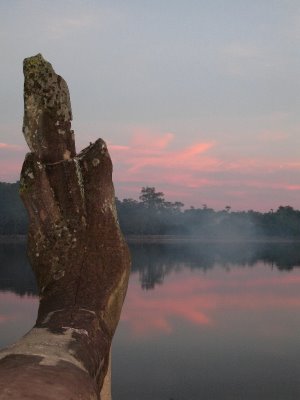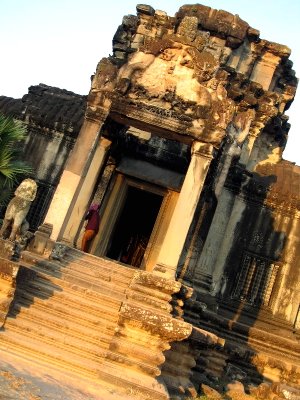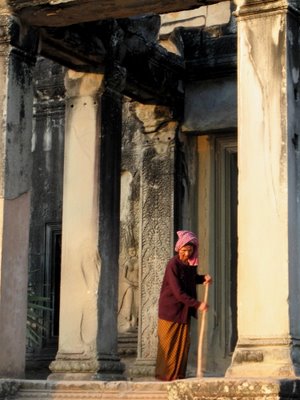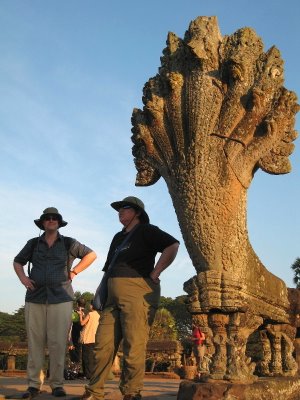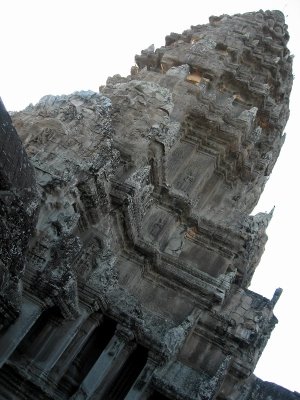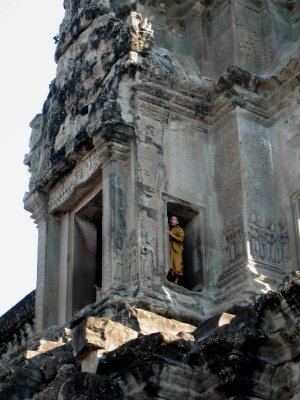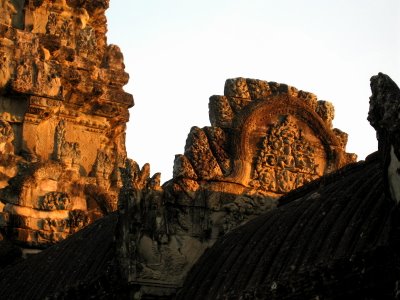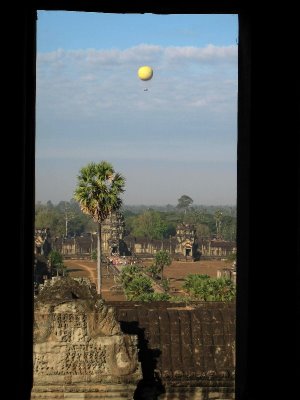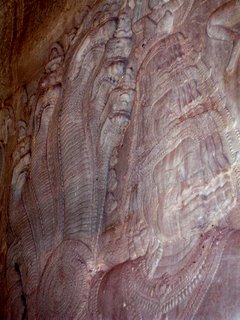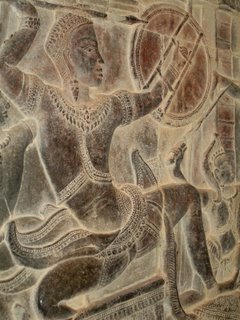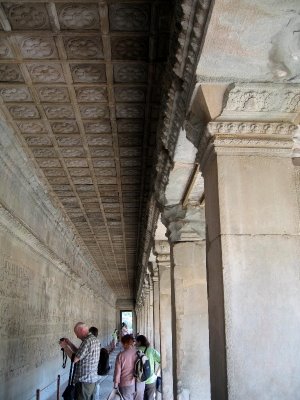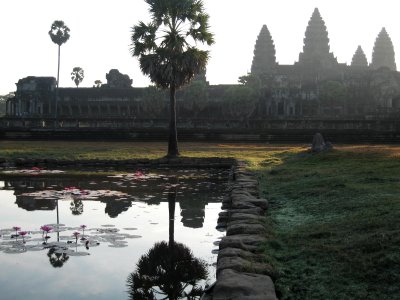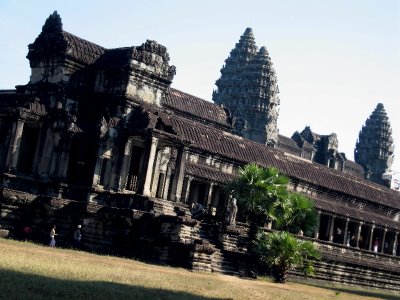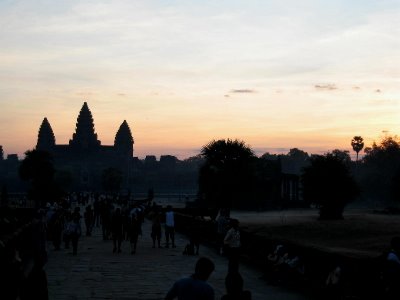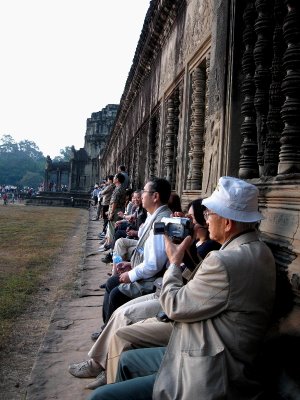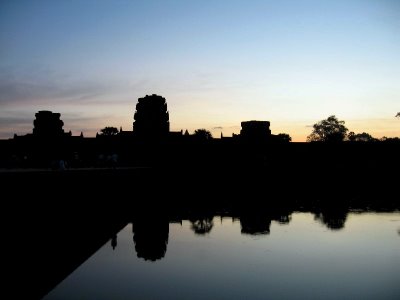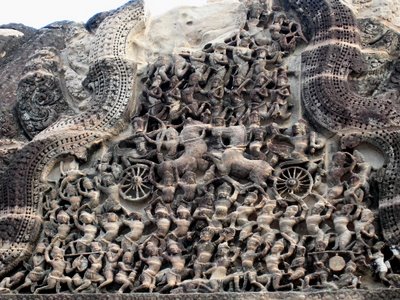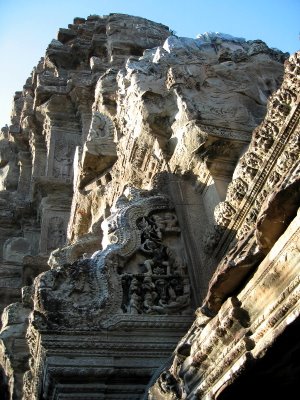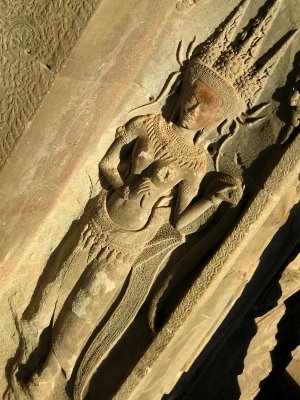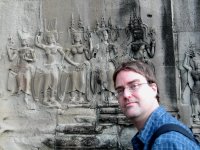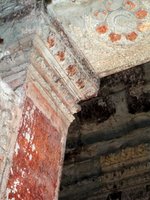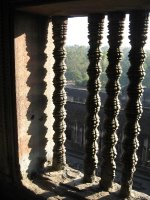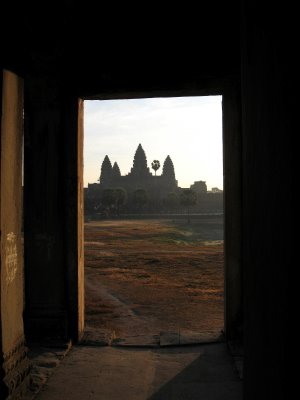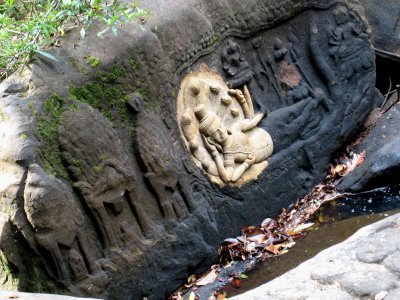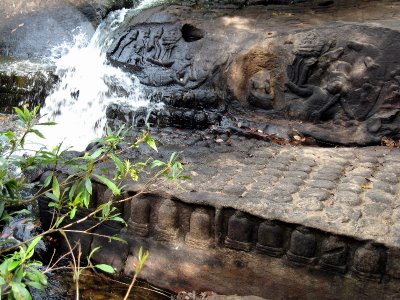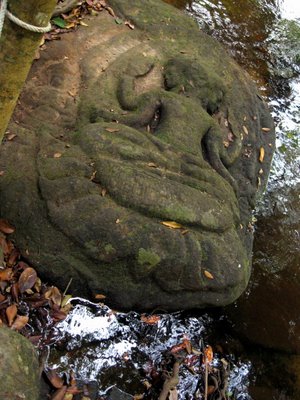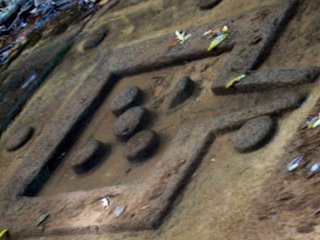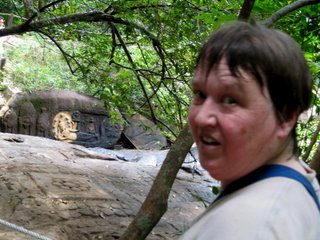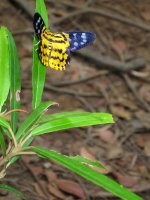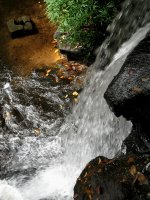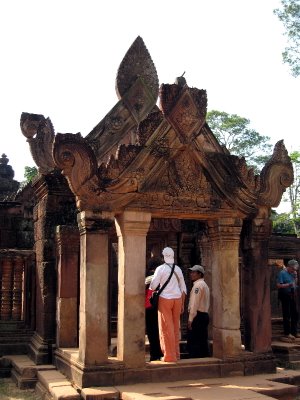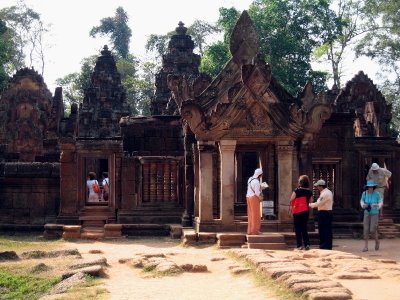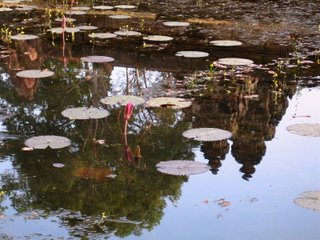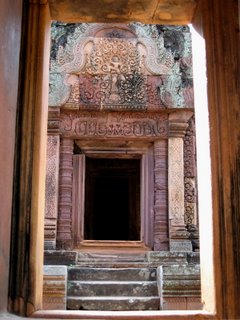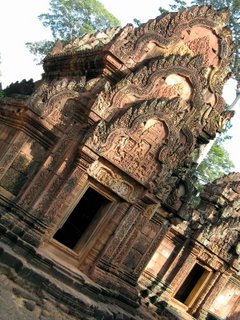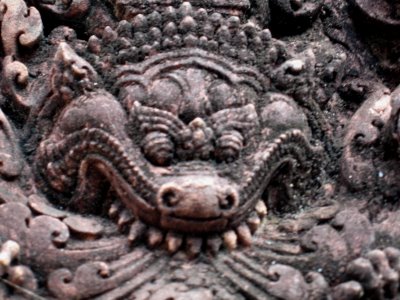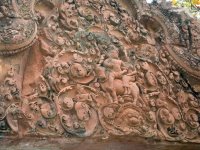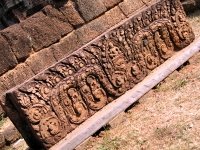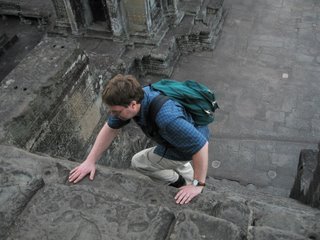
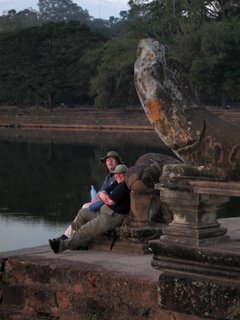 Steve climbing "steps" (almost more like a ladder that you can't really hang onto) up to the inner sanctuary; some Buddha sanctuaries within the inner sanctuary - Angkor Wat and the other temples, like Polonnaruwa et. al. in Sri Lanka, began Hindu, and sometimes went through more than one transition to Buddhism and back, though contemporary Cambodia is mostly all Buddhist. Also: Mom and Steve waiting for the sun to peak over the outer walls of Angkor Wat.
Steve climbing "steps" (almost more like a ladder that you can't really hang onto) up to the inner sanctuary; some Buddha sanctuaries within the inner sanctuary - Angkor Wat and the other temples, like Polonnaruwa et. al. in Sri Lanka, began Hindu, and sometimes went through more than one transition to Buddhism and back, though contemporary Cambodia is mostly all Buddhist. Also: Mom and Steve waiting for the sun to peak over the outer walls of Angkor Wat.
But in the meantime: let’s talk about Cambodia, modern-day home to the magnificent ruins of the once proud Khmer Empire. Angkor Wat: a name that’s held mystery and allure for me as long as I can remember – literally. I’m quite sure I knew about Angkor Wat before I was ten, and as long-time readers know, landlocked little Paulie Brockmann was obsessed with the world beyond Lake Erie and the Ohio River when he was still in Bugs Bunny PJ’s. I discovered – somewhat to my amazement – that many well-versed citizens of the world have never heard of Angkor Wat. So…how did you guess!? Time for a brief history. I promise to keep it short, since I’m even farther from any kind of Cambodia expert than from being any kind of Sri Lanka expert.
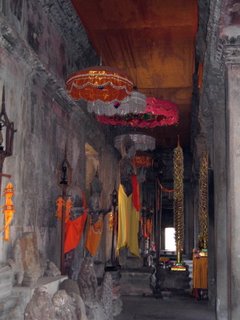
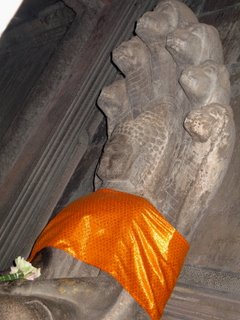
Some factoids: Cambodia’s mostly flat, with some mountains around a couple edges of the modern-day borders. A big feature is a lake which appears massive on the map, called Tonle Sap. It connects, via a 120-km or so long river (the lake itself is that long or longer, end to end), to the Mekong in Phnom Penh. Get this: the Mekong and Tonle Sap meet in Phnom Penh, and the main Phnom Penh riverfront is on the Tonle Sap (I always imagined it was the Mekong). Better yet: during the rainy season, the Mekong gets so full that it backs up (runs upsteam!) into the Tonle Sap river, which backs up all the way to the Tonle Sap lake, which grows into an enormous mud puddle. I know it’s a mud puddle, because we’re only talking about 10 meters or so of height: the embankments in Phnom Penh, in early January partway into the dry season, only showed about 10 or maybe 20 meters’ worth of open height, so I figure the elevation difference between PP and the lake can’t be more’n about 20 meters if that – meaning, when the lake grows, it’s mighty big and mighty shallow. And mighty productive of freshwater fish.
But let’s get to the stuff that makes the Khmer really proud. We know it as Angkor Wat – and think of it, most of us I suspect, as “a temple.” We know it’s magnificent, we suspect “it” is one of the most remarkable things we may ever see. But it’s not an it. It’s the largest and most compelling complex of temples I’ve ever seen or heard of anywhere. Angkor Wat itself – Lonely Planet tells me – is the largest religious structure ever built in the world. t is also, on its own, one of the most beautiful creations of human imagination and faith I have ever seen. But it is one small part of the overwhelming splendor of Angkor. There are more than 20 major temples and buildings, many dozen less important ones spread across an area maybe 100km by 50km or more in size, approximately.
 I begin with an apology, and a story. First: despite my best efforts, I'm still posting far more photos than I'd ordinarily think reasonable. But I hope you'll agree that what I've seen is awe-inspiring enough to make it worth your perusal. Second: slice of life from Colombo, as I went for my lunchtime swim at the Otter Swim Club the other day (mostly Sinhalese, lots of families; we are NOT talking 24 Hour Fitness WeHo here, people) , what should my wondering eyes hear over the speakers but that early 1980s gay classic, Bronski Beat's "Tell Me Why." Wow. I'm sure I was the only one in the whole club who had any clue what I was listening to.
I begin with an apology, and a story. First: despite my best efforts, I'm still posting far more photos than I'd ordinarily think reasonable. But I hope you'll agree that what I've seen is awe-inspiring enough to make it worth your perusal. Second: slice of life from Colombo, as I went for my lunchtime swim at the Otter Swim Club the other day (mostly Sinhalese, lots of families; we are NOT talking 24 Hour Fitness WeHo here, people) , what should my wondering eyes hear over the speakers but that early 1980s gay classic, Bronski Beat's "Tell Me Why." Wow. I'm sure I was the only one in the whole club who had any clue what I was listening to.
